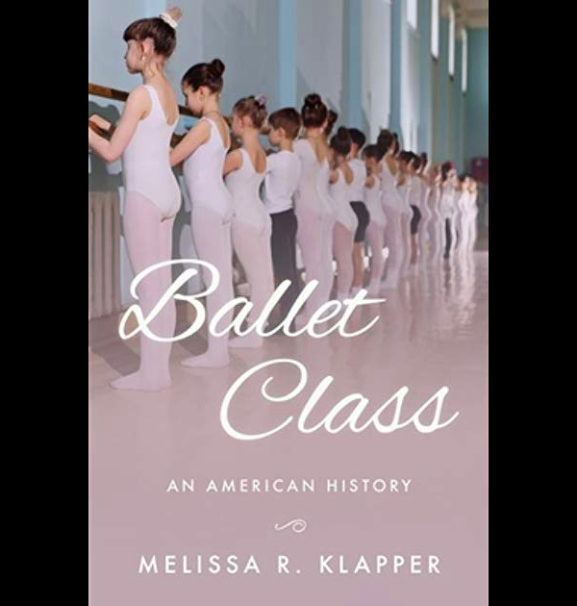
ed. note: artsmeme is pleased to publish a two-part excerpt, from a new book, Ballet Class: An American History by Melissa R. Klapper (Oxford University Press, March 2020). Our Los Angeles-based blog requested writing from Ms. Klapper that focuses on the early history of ballet training in our city. Part two below!

The Russian dancer, actor, and teacher Theodore Kosloff shared [Ernest] Belcher’s desire to spread knowledge of ballet throughout the U.S. “The ballet has come to stay, take my word for that,” he told the Cleveland Plain Dealer in 1912. “They call it a craze which may pass away, but people have had a bit of drama without words and they will not be contented or satisfied hereafter without it.” Kosloff and his wife Baldina had opened a ballet studio in New York in 1915, but they soon moved to Los Angeles, where she ran the Theodore Kosloff School of Imperial Russian Ballet while he appeared in many movies as both a dancer and an actor. A number of movie stars took ballet classes there, including Joan Crawford and Paulette Goddard, who were drawn to a style that encompassed both technical classicism and dramatic expressiveness. More than just a savvy businessman who banked on his growing fame to franchise studios in San Francisco in 1926 and Dallas in 1929, Kosloff was one of many European teachers who saw greatness in the future of ballet in America. “No girls in the world. . .grasp so quickly what is wanted and then execute that wish,” he said of the students who poured into his classes. “The girls of other nations excel in one thing. . .but the American girl will do whatever is asked of her.” This drive to achieve, he believed, would elevate the art form.[i]

The increasingly common appearance of ballet on the stage and especially in movies encouraged children across the U.S. to ask their parents for ballet lessons. But there were still many parts of the country with no ballet teachers at all. To fill this void, some published lessons in periodicals. The series of lessons that Albertina Rasch wrote for the Evening Journal in 1930 seemed to address parents, especially mothers who sought to teach their own children. A Vienna Opera-trained dancer, Rasch became the leading ballerina of New York’s Hippodrome in 1911. She opened a ballet school in 1923 and trained dancing troupes first for Broadway and then, after moving to Los Angeles and starting another school, for Hollywood. Rasch prefaced her 1930 Evening Journal series by touting the benefits of ballet, exclaiming, “Every mother wants her daughter to be beautiful. She knows the satisfaction a beautiful young girl, poised and charming, gives to every one who sees her” (sic). As an experienced dancer and teacher, Rasch knew perfectly well that no one could seriously hope to learn ballet in ten lessons, let alone ten written lessons, but she did think that she could successfully explain the basics of ballet to readers unfamiliar with the art form and its specific technique. She believed it would be possible to gain grace and poise by practicing the exercises she laid out, since “early dancing lessons lay a foundation that cannot be taken away from a girl.” Rasch also expressed her hope that “training and educating these little minds and bodies to appreciate the higher forms of dancing may mean the creation of an American ballet.” She shared other European teachers’ optimism that the U.S. was fertile ground for the blossoming of ballet. The Evening Journal’s decision to run such a series in the first place demonstrated that there was an interested audience and a growing demand for ballet lessons in America.[ii]
[i] Suzanne Levy Carbonneau, “The Russians are Coming: Russian Dancers in the United States, 1910-1933,” (PhD Thesis, New York University, 1990), 104, 160-163, 118.
[ii] Quoted in Carrie Gaiser Casey, “Ballet’s Feminisms: Genealogy and Gender in Twentieth-Century American Ballet History” (PhD Thesis, University of California, Berkeley, 2009), 51; Dorothy Kilgallen’s Scrapbook of “Lessons on Ballet no. 1-10 by Albertina Rasch, 1930,” MGTM-Res. 78-4049, New York Library for Performing Arts.
second of two parts. read part one here
Melissa R. Klapper is Professor of History and Director of Women’s and Gender Studies at Rowan University. She is the author of Jewish Girls Coming of Age in America, 1860-1920, Small Strangers: The Experiences of Immigrant Children in the United States, 1880-1925, and Ballots, Babies, and Banners of Peace: American Jewish Women’s Activism,1890-1940, winner of the National Jewish Book Award in Women’s Studies.
